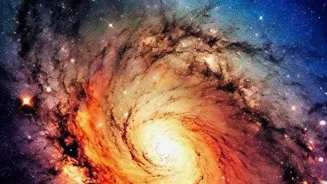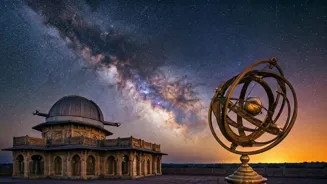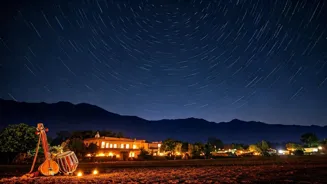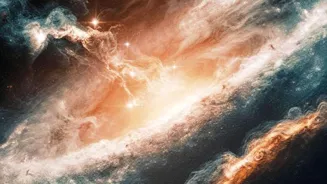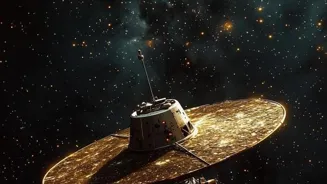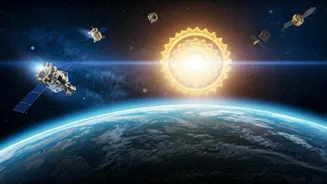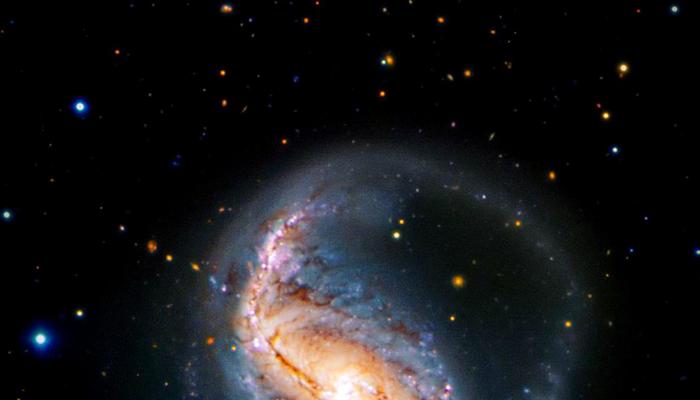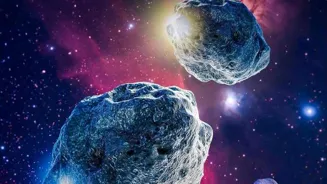Unveiling Nebulae: Cosmic Nurseries of Stars & Galaxies. Dive into the universe's breathtaking art galleries!
Stargazers in India, have you ever looked up at the night sky and wondered about those faint,
fuzzy patches? Those aren't just distant clouds; they're nebulae – the universe's very own art galleries and bustling birthplaces of stars! A nebula is essentially a giant cloud of dust and gas in space.
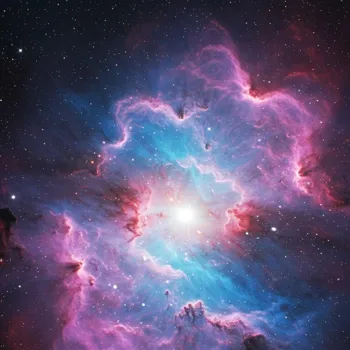
These clouds are made up of mainly hydrogen and helium, alongside other elements.
Nebulae: Cosmic nurseries birthing new stars
These magnificent structures may seem still, but they are regions where new stars are being continuously born. Imagine them as cosmic nurseries, where gravity pulls together the dust and gas, with intense pressure.
Eventually, these materials will begin to collapse and heat up, eventually leading to the creation of a brand-new star. Studying nebulae helps scientists delve into the origins of stars and entire galaxies' evolution.
Nebulae: cosmic recycling centers for star formation
Nebulae are not just stargazing wonders; they are cosmic recycling centers! When giant stars reach the end of their lives and explode as supernovas, they eject a lot of dust and gas into space. This material then mixes with existing clouds of gas, which leads to the creation of new, richer nebulae.
This cycle ensures continuous star formation in galaxies.
Types of nebulae: emission, reflection, dark, each with unique properties
Not all nebulae are created equal! There are different types, each with unique characteristics and reasons for their appearance. Emission nebulae glow due to the light emitted by ionized gases. Reflection nebulae scatter the light from nearby stars, making them appear blue.
Dark nebulae are dense clouds of dust that block the light from objects behind them.
Emission nebulae glow due to hot young stars
These are probably the most well-known and visually striking nebulae. Emission nebulae glow because of the energy they receive from hot, young stars inside them. The intense ultraviolet radiation from these stars ionizes the gas in the nebula, causing it to emit light.
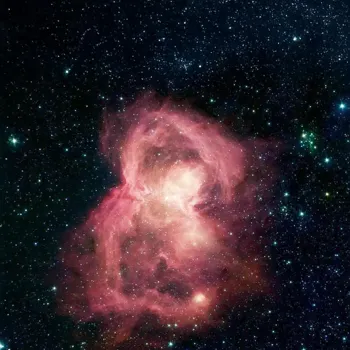
This emitted light gives these nebulae their vibrant appearance. The famous Eagle Nebula, with its magnificent "Pillars of Creation," is one example.
Reflection nebulae reflect starlight, creating colorful hues
Unlike emission nebulae that emit their own light, reflection nebulae simply reflect the light from nearby stars. The dust in these nebulae scatters the starlight, like how dust particles in Earth's atmosphere scatter sunlight, creating beautiful colors.
Because blue light scatters more easily than red light, reflection nebulae often appear with a bluish hue. The Witch Head Nebula next to Rigel in Orion is a good example.
Dark nebulae block light, aiding star formation
Dark nebulae, unlike the other types, don't emit or reflect light. These are so dense that they block the light from stars and other objects behind them. They appear as dark patches against a brighter background of stars or glowing gas.
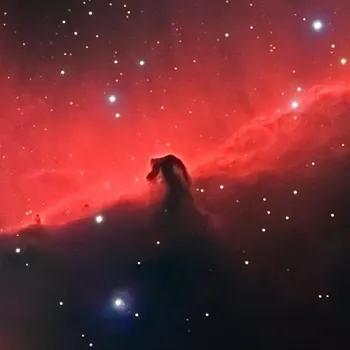
While they might seem like empty voids, dark nebulae are actually regions brimming with the raw materials for new stars. The prominent Horsehead Nebula in Orion, is a well-known illustration.
Planetary nebulae: not related to planets, formed by dying stars
Planetary nebulae have nothing to do with planets! These beautiful nebulae are formed when sun-like stars reach the end of their lives. As these stars run out of fuel, they puff off their outer layers of gas and dust into space.
Ultraviolet light from the hot core of the dying star then illuminates these ejected layers, creating incredibly complex structures. Ring Nebula, looks like a cosmic eye from Earth.
Supernova remnants are glowing ruins of massive star explosions
Supernova remnants are the leftovers from the spectacular deaths of massive stars. When a massive star explodes as a supernova, it sends a shockwave through the surrounding space. This shockwave slams into the interstellar medium, heating it up and causing it to glow.
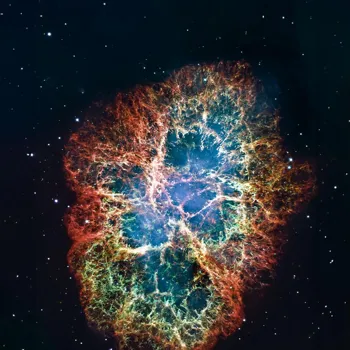
The Crab Nebula is a prime example of supernova remnant, the glowing ruins of a star exploded centuries ago.
Some deep-sky objects visible with binoculars or naked eye
While some deep-sky objects require powerful telescopes, others are bright enough to be visible with binoculars or even the unaided eye, especially from locations away from city lights. The Orion Nebula, is visible to the naked eye under clear skies.
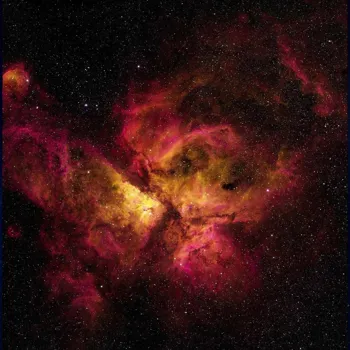
It appears as a fuzzy patch south of Orion's belt. With binoculars or a small telescope, you can see more details. Other nebulae, like the Carina Nebula in the southern hemisphere, offer gorgeous views.
Find a Dark Location
Light pollution can greatly wash out faint objects.
Use Binoculars or a Telescope
Even a small telescope can reveal wonders.
Studying nebulae reveals insights on universe's evolution
Understanding nebulae is crucial for understanding the universe itself. They provide insights into the life cycle of stars, the formation of elements, and the evolution of galaxies.
By studying the composition, structure, and dynamics of nebulae, scientists can piece together the story of how the universe came to be, and where it is headed. They hold clues to understanding these cosmic ecosystems.
Nebulae: cosmic workshops creating stars, galaxies, and life stories
So, the next time you gaze up at the night sky, remember those fuzzy patches are nebulae – the universe's amazing workshops for creating stars and galaxies! Each nebula is a story to be told, of stellar birth, death, and recycling.
Understanding nebulae brings us closer to understanding our complete existence in the massive cosmos.
AI Generated Content. Glance/InMobi shall have no liability for the content
